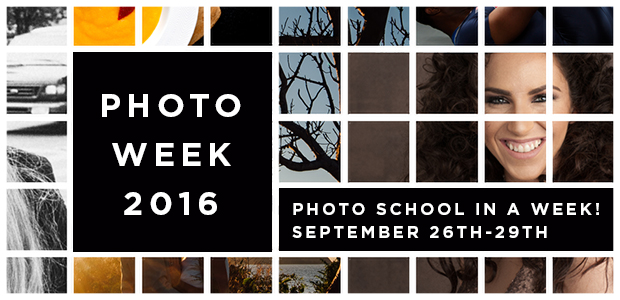
The ancient Chinese proverb “you eat with your eyes first” has likely never been more true than in today’s social media-driven world. Thanks to customers using platforms like Instagram to make dining decisions, chefs and restaurant owners not only need to know how to work a line; they also need to know how to work a lens.
Wes Rowe, restaurateur/chef and photojournalist, knows first hand how powerful a mouth watering food photo can be. Before he was crowned San Francisco’s burger champ, he worked as a food photographer for publications like Zagat and Serious Eats. Wes says his background in photojournalism has helped him parlay his passion for creative juicy burgers and slow-smoked brisket into his own business, steadily rising from pop-up sensation to acclaimed San Francisco chef.
RSVP’s for Photo Week 2016 have begun! Sign up now to get notified of when it’s free to watch!
Today the self-taught chef slings fried chicken burritos, tater tots, and award-winning burgers out of his own 1960s-style diner in the trendy Mission District, but he often trades a spatula for a camera, knowing that to fill seats he’s first got to lure with shots like this:
Bringing his unique perspective as both chef and photographer, here are Wes Rowe’s tips for taking better food photos whether you’re a professional cook, restaurant owner, or diner looking to up your Instagram game.
1. Take color and contrast into account when cooking or staging. While Wes is much more focused on flavor when developing a recipe, he seeks opportunities to use color contrast in his dishes, knowing that the more colorful the dish, the better it will translate in a photo. “Monotone food is boring and one-dimensional,” he says. Instead he advises chefs to look for ways to have contrasting colors share a plate. “Yellows and greens and reds do well. Anything opposite each other on a color wheel will make the photo pop.” You don’t have to rethink your entire menu, however. “It can be as simple as adding a garnish at the last step that doesn’t affect the flavor of the dish, but adds depth to the photo,” Wes says.
2. Consider presentation and plating style. Certain styles of cooking lend itself to certain presentations on the plate. Wes’s down-home cooking, for instance, needs a functional plating style–he uses the whole plate and positions food how diners would likely set about eating it. Meanwhile, fine dining “tweezer food” looks artful when contrasted with negative white space. In general, distinct elements translate better than piles of deliciousness. But as Wes points out, you can add balance and perspective to a shot by garnishing a bowl of chili, for instance, with sprinkles of cheddar cheese or green onions.
3. Shoot next to a window in the daylight. Inside lighting usually casts warm or yellow hues, while natural light tends to disperse cooler colors. According to Wes, when both lighting is present in a shot, it’ll create a muddled or uneven appearance. And in general yellow lighting can make even the freshest food look like it’s straight out of a greasy spoon, “The camera won’t know how to adjust for the two colors,” says Wes. So his trick is to move the dish to the window and turn off the inside lights, that way you’re left with a single light source.
For the rest of Wes’ food photography tips, and for more of his beautiful work, read the full post on Adobe Spark.
RSVP’s for Photo Week 2016 have begun! Sign up now to get notified of when it’s free to watch!



